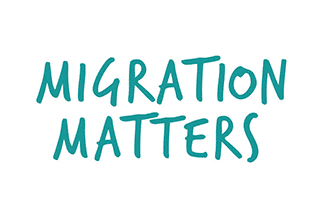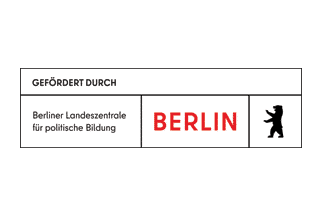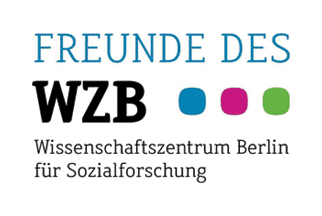Lesson Plan: Rethinking ‘Us’ & ‘Them’

This lesson plan invites high school students to critically examine their perceptions of integration, belonging, identity, and migration. Over a 90-minute session, students engage in interactive activities, reflective discussions, and thought-provoking video screenings providing various perspectives to explore the fluidity of ‘Us’ versus ‘Them’ dynamics in society. The lesson challenges students to reconsider their views on integration and its connection to identity and belonging. It aims not only to educate but also to empower students to think critically about complex social issues and their roles in a diverse society.
Content Focus
Subject/context: English language, social sciences, ethics and philosophy
Length: 90-minute session.
Language of workshop: English (videos available with German subtitles)
Student level: 10-12th graders, minimum B2 English
Key Question: How do our perceptions of ‘Us’ and ‘Them’ influence our understanding of integration and belonging?
Global Education Topics: Integration, migration, belonging, home, discrimination, identity.
Main Learning Objective: Students will reflect on the meaning of integration and the factors that contribute to a sense of belonging. They will explore what influences feelings of being ‘at home’ or ‘not at home’ in a community, and consider the roles played by individual choice and environmental factors in these perceptions.
Sub Learning Objectives:
- Analyze and compare different perspectives on integration and understand integration as a multifaceted concept.
- Explore how concepts of integration and belonging are fluid and can be influenced by a myriad of factors.
Lesson Outline
Class Introduction (5 mins)
Objective: Set the stage for the lesson and prepare students for the topic.
Activity: Outline the session’s goals and introduce the key question: “How do our perceptions of ‘Us’ and ‘Them’ influence our understanding of integration and belonging?”
Activity – Us & Them Spectrum (20 mins)
Objective: Engage students in self-reflection and initiate conversation about belonging.
Activity:
- Setup: Create a line on the floor with “Us” at one end and “Them” at the other. Use visible markers or tape for clarity.
- Explain activity: Students place themselves along the spectrum in response to various prompts.
- Initial prompts: Neutral topics like preference for sports, music, food choices, or pet ownership.
- Second stage prompts: Focus on diversity and migration, such as language spoken at home, number of passports, sense of belonging to their country or local community.
- Reflection: Encourage students to share their experiences and feelings about their positions on the spectrum. Discuss the fluidity of identity and belonging.
Video Screening #1 (10 mins)
Objective: Introduce diverse perspectives on integration.
Activity:
- Pre-Screening Discussion: Ask students about their understanding of “integration.” Gather initial thoughts and expectations.
- Introduction: Explain the context of the Migration Matters video, encouraging students to identify factors of integration mentioned by individuals in Berlin.
- Screening: Video (What Does Integration Mean to You?)
Understanding Terminology (15 mins)
Objective: Deepen students’ understanding of integration through analysis and discussion.
Activity:
- Group Activity: In small groups, students list integration descriptions from the video and discuss points of agreement or disagreement.
- Input: The instructor provides expert definitions and perspectives on integration. Suggested resources:
Video Screening #2 (15 mins)
Objective: Provide insight into the experiences of individuals with migration backgrounds and their views on integration.
Activity:
- Introduction: Brief students on the background of the speaker in the Migration Matters videos and encourage students to consider the factors of integration and belonging highlighted by the speaker in the video.
- Screening: Video #1 (If Integration Isn’t the Answer, Then What Is?) and (What Makes You Feel Like You Belong?) – both in German but available with English subtitles.
Group Discussion (20 mins)
Objective: Synthesize learning and encourage critical thinking about integration and identity.
Activity:
- In small groups: Students revisit their initial thoughts on integration from the “understanding terminology exercise” and compare them with new insights and discuss how integration connects to belonging and vice versa.
- Discussion: Facilitate a large group conversation about their small group discussions, what questions still remain unclear, and how their understandings of integration and belonging have changed (or not) after the session.
Closing (5 mins)
Objective: Wrap up the lesson and reinforce learning.
Activity:
- Recap the main points discussed.
- Reflect on the key question and what they have learned.
Additional Notes & Suggestions
Materials Needed: Cards and/or tape for spectrum activity, flip charts or boards, markers and pens, projector for videos.
Preparation: Prepare “Us” and “Them” cards for spectrum activity and/or the line of tape, have flip chart paper or boards ready for terminology activity, review resources on integration, source and test video equipment.
Videos: There are many other videos from this Migration Matters series that you can screen instead of or in addition to those suggested.
Remain flexible: Some discussions or activities may take longer than anticipated and instructors should feel free to adjust timings and activities as needed.
This lesson plan was created as part of the “Research meets school – new perspectives on migration and integration” project and made possible through support by ‘Friends of the WZB’ (Social Science Center Berlin) and the Landeszentrale für politische Bildung (LPB). If you’re interested in Migration Matters giving an offline or online workshop for your students, reach out to us at team[at]migrationmatters.me. All Migration Matters videos are freely available on YouTube and can be used for non-commercial purposes. This lesson plan is free to use and circulate.


